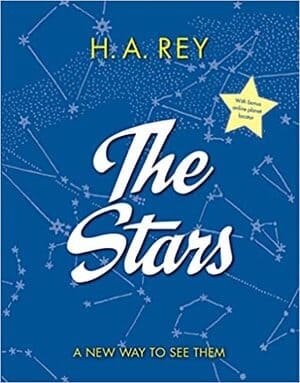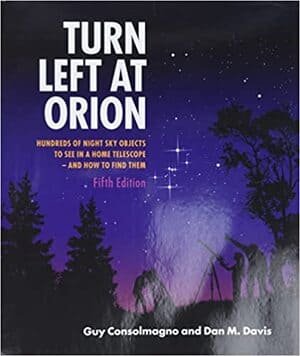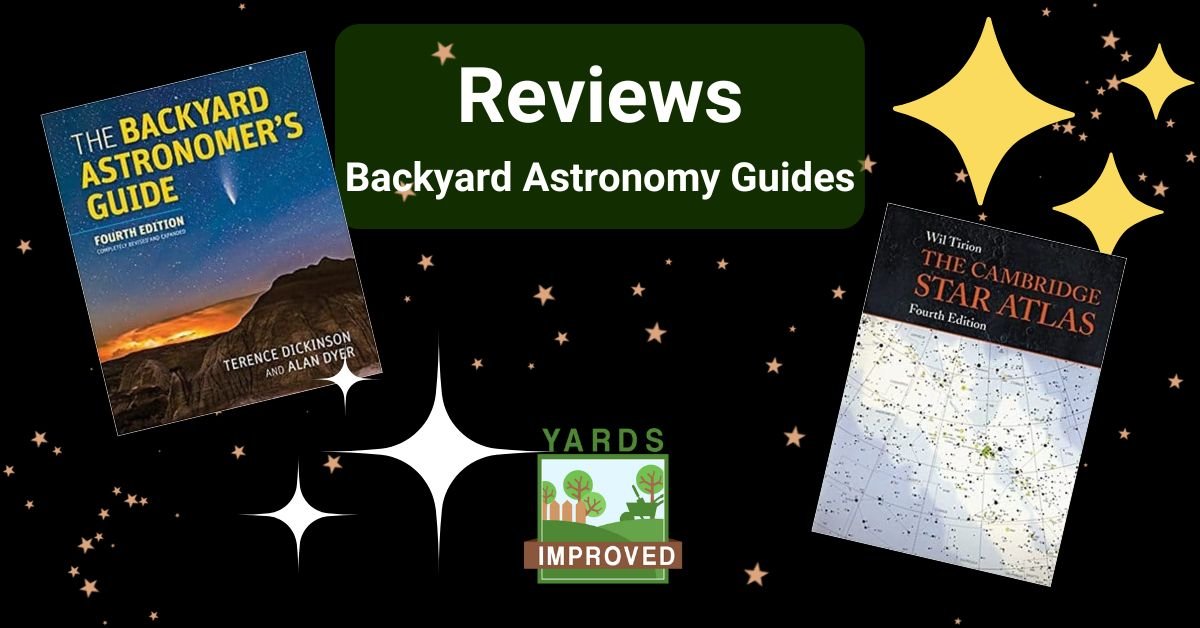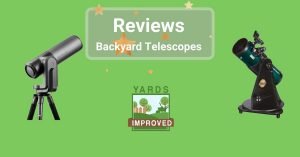Imagine a clear, moonless night. You stare up at the sky in awe of the stars far above. But how much do you know about them? Can you pick out the Big Dipper? Orion? Do you know if that’s a star or the planet Saturn? What about the stories behind the names?
If you’d like to learn more about the night sky – or teach your family about it – you’ll find some great options here. There are many fine entry-level guides to help you understand these heavenly bodies.
Getting Started
Before we look at a few good books, let’s talk about some things to remember.
First, we’re going to look at intro-level guides. If you’re new to stargazing or haven’t been doing it long – or want to share with a rookie – these are good places to start. There are many more advanced resources once you get the basics, but we all have to start somewhere!
We also have to apologize to any readers from the Southern Hemisphere. Of course, the stars we see are different depending on what part of the planet we find ourselves on. And the “major” division is between what we can see from the north and what others will see from south of the Equator. The guides we’re talking about mainly focus on the north!
Another thing to consider is that during the year, we might see different stars, or at least find them in different locations.
Many traditions give names to stars and to the constellations (groups) they form. The names familiar to most of us come from Greek and Roman mythology. But other cultures, from Egypt to China to Native Americans, also created names and stories around them. It’s always fascinating to learn the history of each one! And we like guides that can tell us a bit about each.
One final point. A star map that you can use outdoors at night is a huge help! So we like books that are easy to carry and easy to read with a minimum of light. (You might also want to invest in a red flashlight to read by – the red wavelengths don’t affect your night vision as much as other wavelengths!)
Keeping It Simple
Of course, since we’re just starting, we want books at our level. It’s good to grow slowly and gain interest. After all, if things are too complex, we might not grasp them at first – which means we can also grow bored quickly!
We chose the books on our list below because they’re good to learn from. They aren’t too complex, but at the same time, they lead us from our current state to more understanding. In short, they help make learning fun!
Important Content
There are a few pieces of content that are great to have in a guide to the stars. You might not always find them together, but we love it when you can!
Terms to know
It’s always helpful to know a few terms when you begin looking at the night sky. Knowing the difference between a star and a planet is probably too basic for an adult. But what exactly is a constellation? How far is a light year? What’s “ascension” or a star’s “magnitude”? What’s the azimuth? All of these are helpful when you start looking up and want to know more than just marveling at the simple beauty of the sky.
Star maps
Of course, a map is going to help you find your way around the stars! A good star map will present the constellations in relation to one another. But it will also let you know the time of year you can expect to see the constellations and in what direction in the sky.
Some books even offer maps that break down the specifics by month and time of night. These are particularly great for beginners because it can be difficult to understand how to read a more general map.
The Legends behind the names
We wish this were part of more books! Unfortunately, there’s only so much space available, so you may have to turn to other resources.
Where do constellations get their names? The popular names of star formations are usually connected to stories rooted in ancient myths and legends. Orion, Hercules, and the Pleiades are just a few names, but they originated in a tiny part of the world. Other cultures gave them other names. But what’s the story behind them?
The science behind the stars is fascinating, but so are the stories that were associated with them. It’s wonderful to learn about mythology and why ancient peoples saw their heroes, gods, and goddesses exalted in the heavens.
Our Favorite Star Atlases
We’ve had a look at quite a few star atlases over the years. Here are some of the best! There’s always more you can hope for. Still, these do a good job of helping you get started on an incredible astronomical journey.
The Stars: A New Way to See Them
Author: H A Rey


Does the name H A Rey sound familiar? You might recognize him from a wonderful character he created: Curious George! But here, he goes in an entirely different direction with this simple guide to the heavens.
Originally published well before the first moon landing, the book has been revised and updated to reflect new knowledge and events. It’s also written with a great sense of humor, but that takes nothing away from its accurate and thorough (for a beginner) presentation of stars and constellations.
There’s a great glossary of terms, nice maps, lists of constellations, and even a bibliography where you can find even more books to help you continue learning about the night sky.
It’s written for ages 8 years and up, but even adults can enjoy and learn from it. It’s 160 pages long.
The Cambridge Star Atlas 4th Edition
Author: Wil Tirion


This guide has been continuously updated – it’s now in its 4th edition. And it just gets better and better each time! It’s great for astronomers of all experience levels.
In terms of updates, the maps are sharper. And there are even lists of stars that we now know have planetary systems! The photos of the moon are better, too, and extensively labeled with hundreds of points of interest.
You’ll learn about things you can see with the naked eye, others that require a backyard telescope, and others that only huge telescopes can expose.
It’s 95 pages long and available in paperback and hardcover. It’s also on Kindle.
National Geographic Stargazer’s Atlas: The Ultimate Guide to the Night Sky
Author: National Geographic


We shouldn’t be surprised to find an entry here from National Geographic. As always, they provide a combination of amazing information and incredible photographs, maps, and charts.
This is a large hardcover book, reaching 432 pages! There are 170 maps and charts that cover stars, constellations, and planets.
There’s tons of information here, from how to find stars with telescopes or the naked eye, to exoplanets, to meteor showers. But it’s written in an approachable way that will keep you fascinated and allow you to digest a little at a time.
It may be too big to carry around, but if you can enjoy the stars from your backyard, just set this up on your picnic table for reference! You’ll appreciate all it has to offer.
Turn Left At Orion: Hundreds of Night Sky Objects to See in a Home Telescope – and How to Find Them
Author: Guy J. Consolmagno


Guy Consolmagno has a Ph.D. in astronomy from the University of Arizona, taught at the Harvard College Observatory, served in Kenya in the Peace Corps while teaching physics and astronomy – and is a religious brother in the Society of Jesus and director of the Vatican Observatory. Yes, the Vatican owns and sponsors an observatory – one of the world’s oldest, in fact, but one that’s a leader in its field!
In this book, you’ll find an easy guide to where different objects can be seen in the sky. It also shows what they look like – with your eye, through your telescope’s finder lens, through a small scope, and through a large Dobsonian telescope.
This book is 256 pages long. You can get it as a paperback or spiral bound (handy if you want to take pages in a small binder out to the yard or a park). It’s also available as an electronic textbook.
The Backyard Astronomer’s Guide
Authors: Terence Dickinson, Alan Dyer.


Now in its 4th edition, this guide to the heavens has been around for over 30 years. At 416 pages, it covers a wide range of aspects of the amazing hobby of astronomy. It’s not precisely a beginner’s guide, but it’s great if you have a little dedication to the science of the stars already.
You’ll find great information on staring at the stars with the naked eye but also learn about using binoculars and telescopes. You’ll even find great information on taking pictures with a digital camera or even a cell phone!
The hardbound volume offers lots of information as well as detailed maps and explanations explaining how to find individual stars and constellations.
Conclusion
Look up and enjoy the stars! There’s so much beauty up there, and if you’re lucky, you can appreciate it right from your backyard. But when you want to learn more about what you see, a good guide is a blessing. You don’t have to go overboard; a simple introduction, like those we mention here, is a wonderful starting point.









